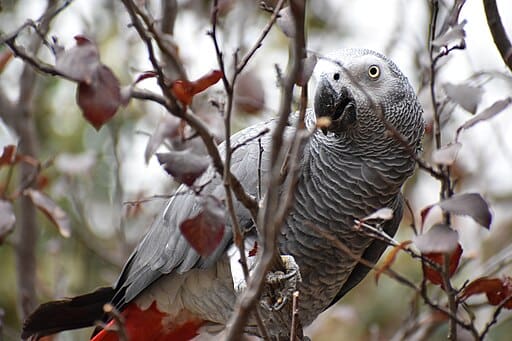Grey Parrots: Ecosystem Protection
The Guinean forests of West Africa are vitally important for the conservation of Grey, Timneh and other parrots, and are recognised as a globally important biodiversity hotspot. WPT’s Nigeria Coordinator Ifeanyi Ezenwa led a multi-year project supported by the CEPF and Minnesota Zoo to understand the threats to Grey Parrots (Psittacus erithacus) in 28 forest sites throughout Nigeria.
The expansion of oil palm plantations is a major threat to biodiversity in the tropics and finding ways to reconcile the demands of a growing human population with biodiversity conservation is a central challenge for sustainable development. Nigeria’s Trade and Investment Ministry recently announced plans to create an additional three million hectares of oil palm estate by 2027. This expansion threatens the remaining habitat for Grey Parrots. There is anecdotal evidence that careful development of oil palm plantations could minimise negative impacts for parrots and other large frugivorous birds.
Status: IUCN Endangered / CITES Appendix I
Population: As few as 560,000, decreasing.
Range: Grey Parrots are found in S Nigeria, S Central African Republic, Republic of Congo, DRC, Gabon, Equatorial Guinea, SE Ivory Coast, N Angola, S Democratic Republic of Congo, NW Tanzania, W Kenya, W Uganda, Principe and Bioko Islands.
Natural history: Seen in primary and secondary rainforest, clearings, mangroves, wooded savanna, cultivated land and gardens to an altitude of 2200 m (7216 ft). Diet includes fruits and seeds, particularly oil palm fruit. Flocks roost in palms over water or on islands in rivers. Breeding is January-February and June-July, E Africa; in other areas the dry season. Nest is a cavity in a tall living tree.

